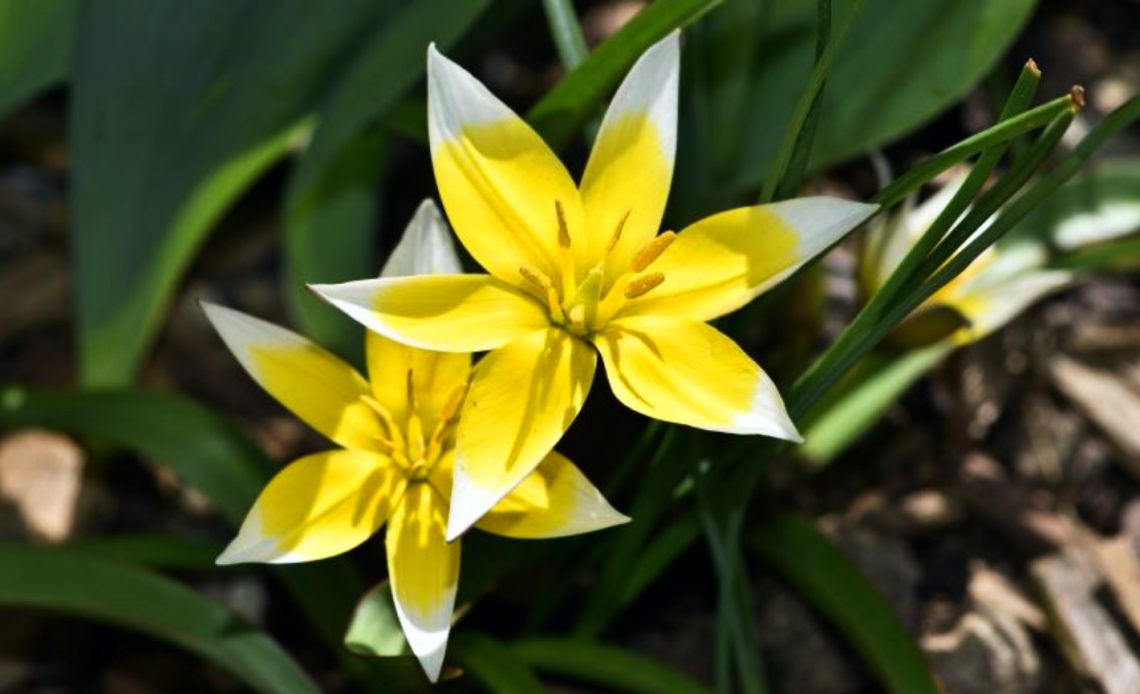

We’re here to help! Wild Yards is a completely free website that is 100% dedicated to helping you create a wildlife-friendly, sustainable yard. Read more
WildYards is reader-supported. When you buy a product through a link on our site, we may earn a comission. Every product is independently selected by our (obsessive) editors and our reviews are unbiased and objective. Read more about our mission or our privacy policy.
Flowers of different shapes, sizes, and colors make your backyard garden more interesting.
Open-faced flowers, like sunflowers, give bees a place to warm up while they feed.
Bell-shaped flowers, like angel’s trumpet, offer pollinators some protection from predators as they collect nectar.
Star-shaped flowers have their advantages, too.
Not only are these types of flowers easy for pollinators to spot but they also add variety to your flower beds.
If you’re looking for star-shaped flowers for your garden, then you’ve come to the right place!
Golden star, star magnolia, and star jasmine are classic-looking star-shaped flowers that look great no matter where you plant them. But bromeliad and starfish cactus are two unconventional choices you may prefer instead.
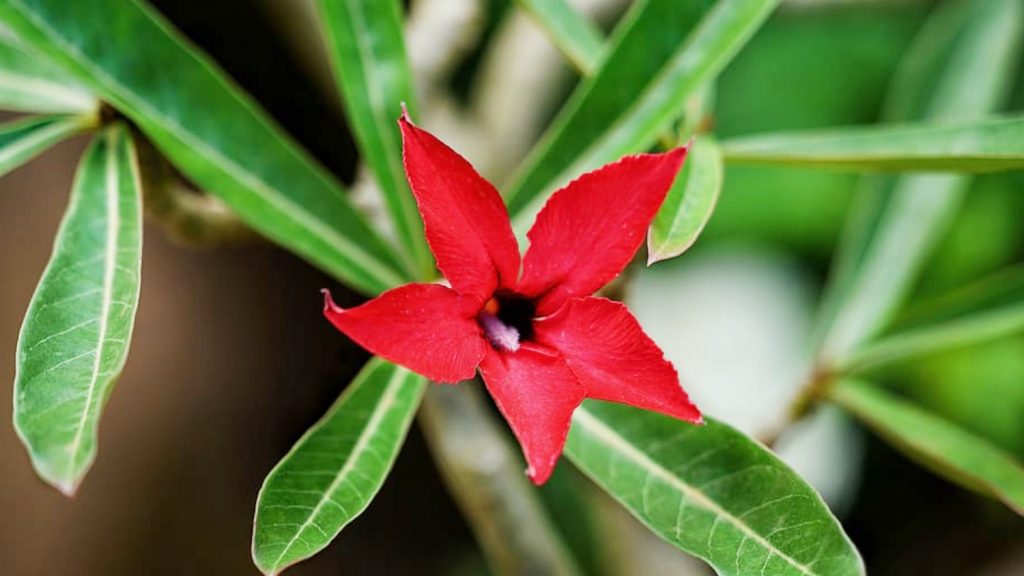
13 Beautiful star-shaped flowers to add to your landscaping
If you’re looking for star-shaped flowers, there are so many to choose from that it can be difficult to narrow things down.
Fortunately, we’ve done all of the hard work for you!
Here are some of our favorite star-shaped flowers. Which one is the right choice for your garden?
Star Jasmine
| Scientific name | Trachelospermum jasminoides |
| Growing zones | 8 through 11 |
| Light requirements | Full to partial sunlight |
| Soil preference | Well-drained sandy to loamy, slightly acidic soil |
| Mature size | 10’ to 30’ tall by 3’ to 6’ wide |
Star jasmine is a fast-growing vine that will quickly cover fences, arbors, and trellises. This plant’s delicate yet fragrant star-shaped flowers will transform any space into a pollinator’s paradise.
The star jasmine is an evergreen plant with shiny, deep green leaves. Because this woody vine is so fast-growing, it makes an excellent privacy screen.
In fact, star jasmine allows you to kill two birds with one stone.
Plant star jasmine along fences to get a bit more privacy from the prying eyes of your neighbors.
And, when star jasmine blooms in spring and early summer, enjoy watching your local bees and hummingbirds, who will jump at the chance to browse this vine’s scrumptious flowers.
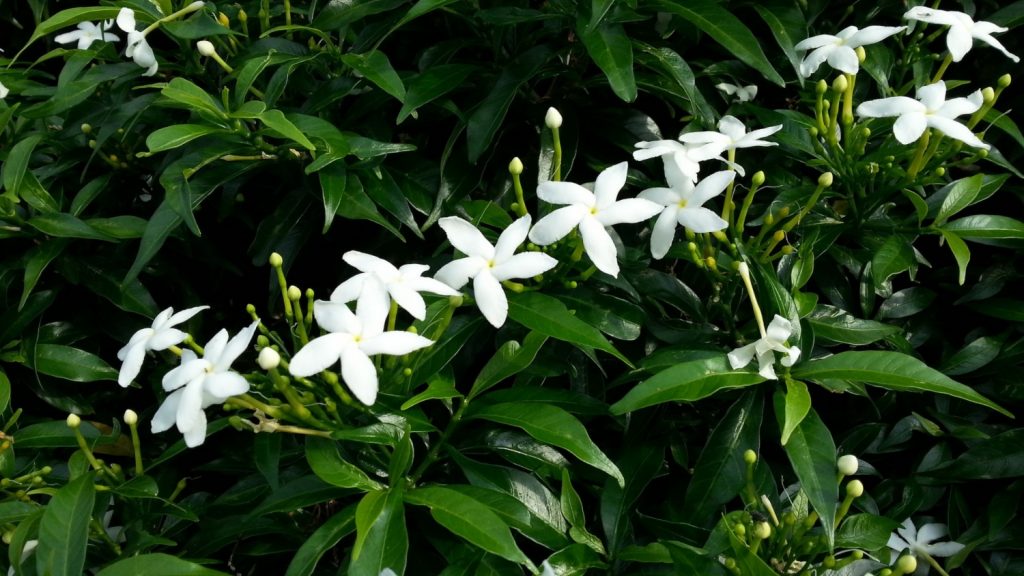
Yellow Star Tulip
| Scientific name | Calochortus monophyllus |
| Growing zones | 4 through 8 |
| Light requirements | Full to partial sunlight |
| Soil preference | Well-draining slightly acidic soil |
| Mature size | 3” to 6” tall by 6” to 12” wide |
If you’re looking for low-maintenance, yellow star tulip has got it all.
Simply plant this star-shaped flower in well-draining soil, make sure it gets plenty of sunlight, and watch it grow.
Yellow star tulips look just as good growing in pots and containers as they do nestled in amongst the other flowers in your landscaping.
Did you know that yellow is one of the bees’ favorite colors?
Adding yellow star tulips to your garden is a great way to support these endangered pollinators and support the health of your local ecosystem. A win-win!
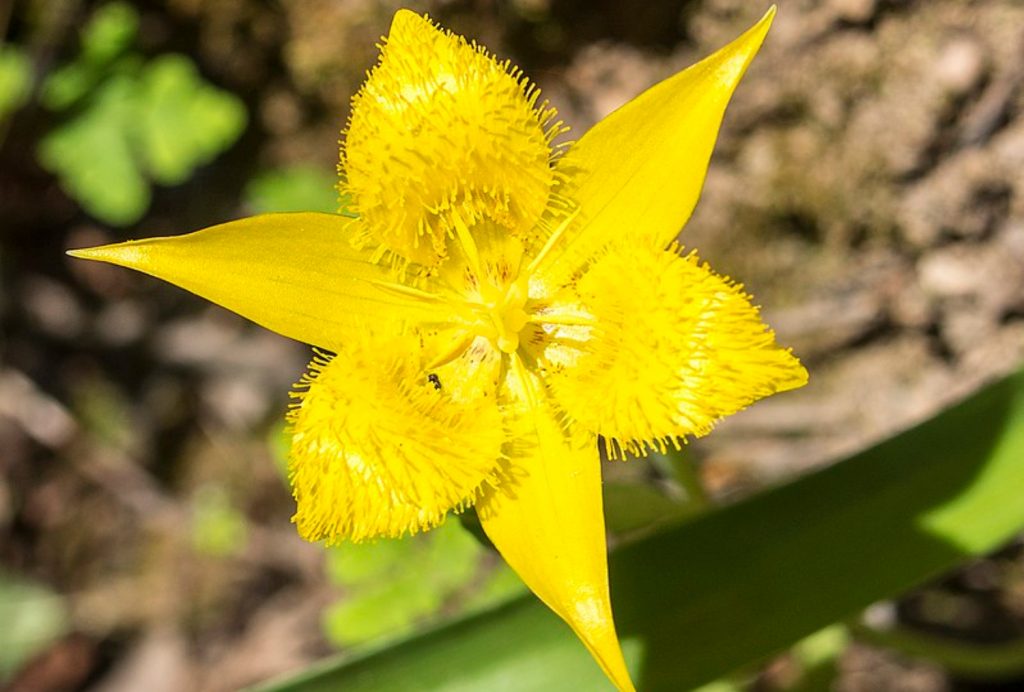
Bromeliad
| Scientific name | Bromeliaceae family |
| Growing zones | 9 through 11 |
| Light requirements | Bright indirect sunlight or morning sun and afternoon shade |
| Soil preference | Well-draining potting soil rich in organic materials. An orchid soil mix works well |
| Mature size | 2’ to 3’ tall by 1’ to 2’ wide |
A member of the Bromeliaceae family, bromeliads are a group of flowering plants that also includes the pineapple.
Bromeliads produce sharp, jagged foliage in a variety of colors. They are often grown as houseplants as they thrive in indirect sunlight and warm, humid environments.
These star-shaped flowers aren’t especially popular with bees, but beetles enjoy perusing the stiff, toothed petals of the blossoms.
Bromeliads typically only bloom once but can produce multiple offsets (adorably called “pups”) which can produce flowers, too.
There are dozens of bromeliads to choose from, and these gorgeous star-shaped flowers come in shades of red, pink, yellow, and orange.
Glory-Of-The-Snow
| Scientific name | Chionodoxa forbesii |
| Growing zones | 3 through 8 |
| Light requirements | Full to partial sunlight |
| Soil preference | Well-draining, slightly acidic |
| Mature size | 4” to 6” tall by 4” wide |
So named because its flowers bloom so early in the season that they are often found peeking out from under the snow, glory-of-the-snow produces eye-catching star-shaped flowers that take center stage in your garden in late winter.
One of the great things about glory-of-the-snows is that these bulb flowers naturalize quickly. As long as you avoid mowing over them and allow them to go to seed, they’ll keep coming back year after year.
Glory-of-the-snow produces lovely blossoms in shades of white, pink, blue, and purple.
Plant your glory-of-the-snow bulbs in rock gardens or wooded spaces in your landscaping along with crocuses, hyacinths, and daffodils.
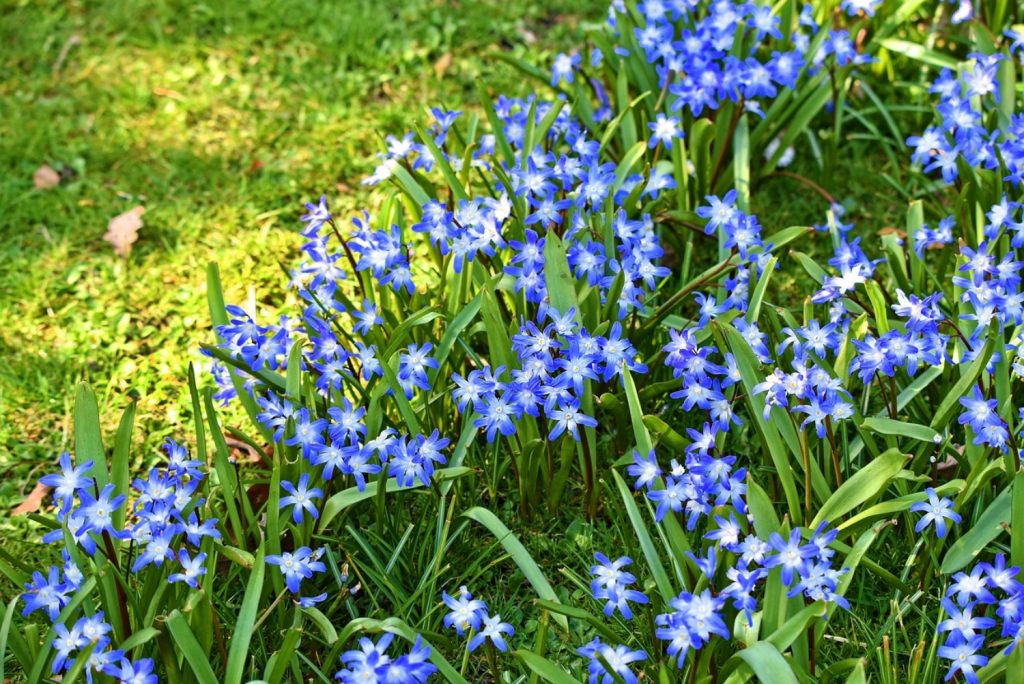
Pentas
| Scientific name | Pentas lanceolata |
| Growing zones | 10 through 11 |
| Light requirements | Full to partial sunlight |
| Soil preference | Well-draining, rich in organic materials |
| Mature size | 1’ to 3’ tall by 1’ to 2’ wide |
Pentas look beautiful, no matter where you put them.
Plant pentas in your flower beds to fill in the gaps in your landscaping. Or, grow them in colorful pots to decorate your front porch.
Their clusters of star-shaped flowers come in a variety of summery colors, including pink, red, white, and purple. Some plants can produce all of these colors at the same time!
Pentas are popular with all sorts of pollinators, including bees, butterflies, and especially hummingbirds.
Plants flower all summer long, providing migrating hummingbirds with some much-needed sustenance as they make their way through your state.
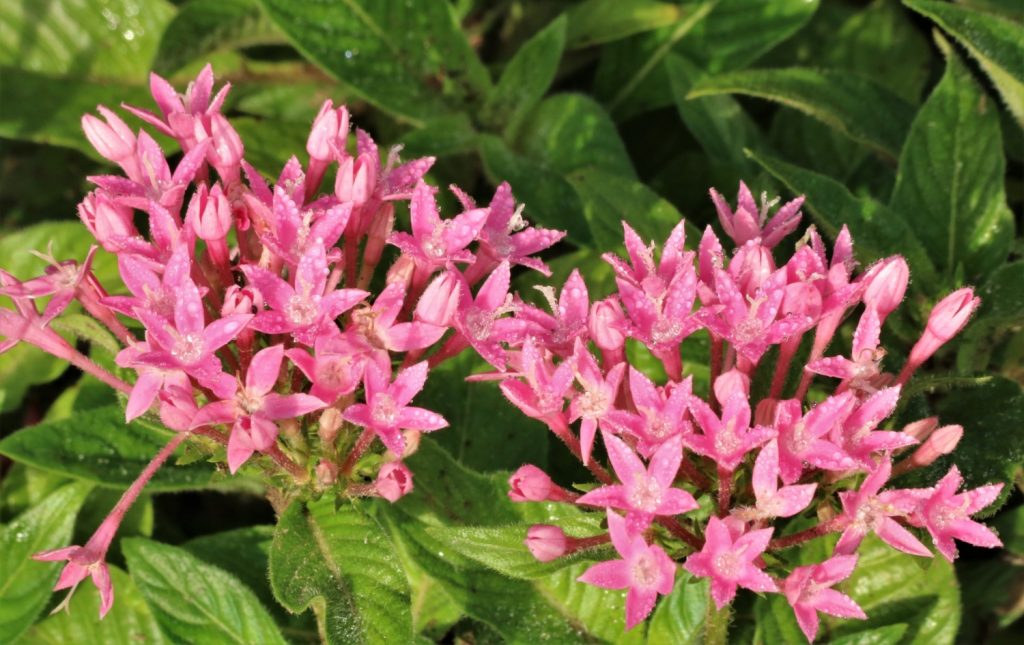
Impala Lily
| Scientific name | Adenium obesum |
| Growing zones | 10 through 12 |
| Light requirements | Full to partial sunlight |
| Soil preference | Well-draining, sandy. Cactus and succulent soil mix works best |
| Mature size | 3’ to 10’ tall by 2’ to 4’ wide |
Also known as the desert rose, the impala lily is a stunning sight to behold, with flashy star-shaped flowers, bright green ovoid leaves, and a sturdy winding trunk.
This exotic succulent is just what you need to accent your tropical-themed landscape.
However, the impala lily also works well in desert-inspired landscapes, as well as zen gardens, and is often grown as a bonsai tree.
The impala lily produces vivid flowers in shades of white, pink, and red. The blooms are often bicolored, with dark tips and paler coloring toward the center of the flower.
Although it is very beautiful, and a great resource for passing pollinators, it’s worth noting that the impala lily is toxic to humans and animals. So be sure to keep this flower out of reach of children and pets.
Star Magnolia
| Scientific name | Magnolia stellata |
| Growing zones | 4 through 9 |
| Light requirements | Full to partial sunlight |
| Soil preference | Well-draining, loamy |
| Mature size | 10’ to 20’ tall by 10’ to 15’ wide |
The star magnolia is breathtaking when it blooms in later winter and spring.
After awakening from its winter dormancy, this deciduous tree’s bare branches are covered in snow-white star-shaped flowers.
The star magnolia is a great source of pollen and nectar for pollinators at a time when they need it most.
This is a small tree that can be trained to grow as a hedge to produce thicker foliage.
Use star magnolia as an accent bush in your foundation landscaping, or allow it to achieve its maximum size to keep your yard in the shade.
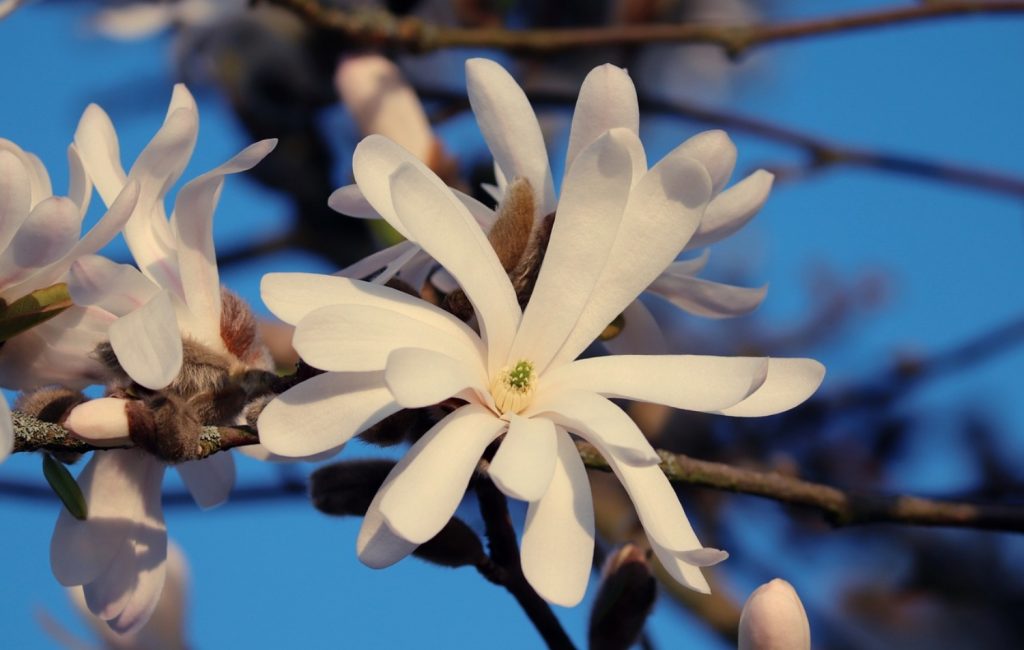
Blue Star Hyacinth
| Scientific name | Hyacinthus orientalis ‘Blue Star’ |
| Growing zones | 4 through 9 |
| Light requirements | Full to partial sunlight |
| Soil preference | Well-draining, loamy |
| Mature size | 8” to 12” tall by 3” to 4” wide |
Also known as Dutch hyacinth, the ‘Blue Star’ hyacinth is an incredibly fragrant cultivar with periwinkle blue flowers shaped just like stars.
These hyacinths are often grown alongside daffodils, tulips, and other bulb flowers that bloom in early spring.
Grow Blue Star as a border around your flower beds or bird baths, or use them as an edging along the walking paths in your garden.
Like glory-of-the-snow, Blue Star hyacinths naturalize when left to their own devices. Young plants produce the showiest blooms, with bloom quality fading over time.
Fortunately, these flowers are easily propagated by separating the tubers.
Blue Star hyacinths are ideal for cut flower gardens. These blooms can last for days in water, spreading cheer inside your home as well as out.
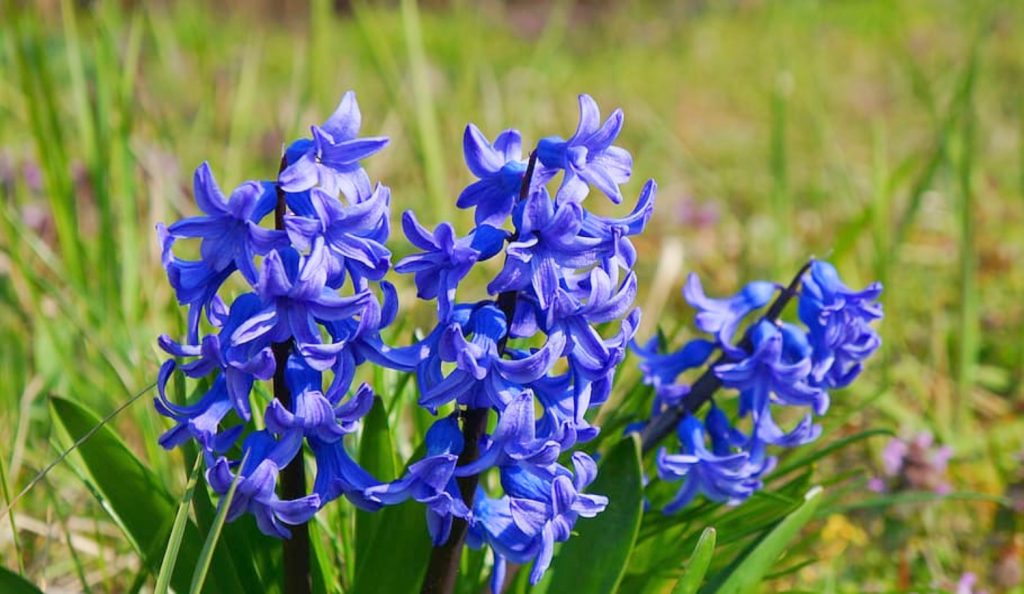
Shooting Star
| Scientific name | Primula meadia |
| Growing zones | 3 through 8 |
| Light requirements | Full to partial sunlight |
| Soil preference | Well-draining, slightly acidic soil that can be kept moist |
| Mature size | 1’ to 2’ tall by 1’ wide |
The shooting star is star-shaped, that’s for sure. But they’re shaped more like a star on the move!
A native perennial wildflower, shooting star doesn’t require much care.
Simply scatter the seeds in well-draining soil that tends to stay moist, make sure the seeds get plenty of sunlight, and enjoy these fascinating flowers when they bloom in spring.
These plants produce lance-shaped leaves and tall flower stalks, which soon give way to clusters of flowers.
Shooting star flowers come in shades of white, pink, and purple.
These fuss-free blooms are a perfect choice for rocky landscapes, as they have no trouble thriving in inhospitable environments.
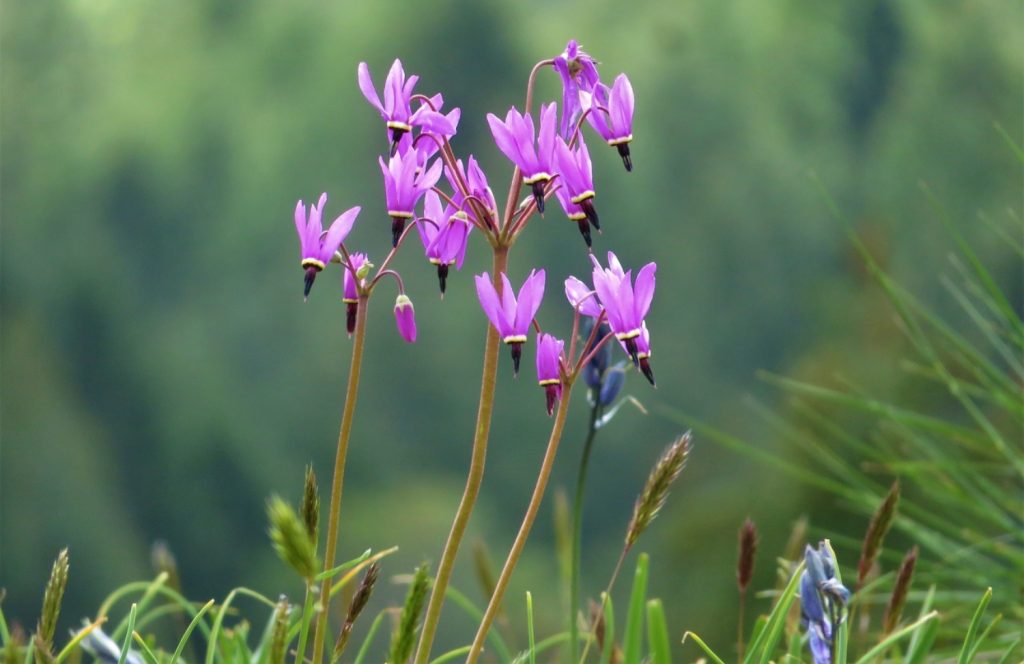
Dahlias
| Scientific name | Dahlia spp. |
| Growing zones | 8 through 11 |
| Light requirements | Full to partial sunlight |
| Soil preference | Well-draining, fertile soil |
| Mature size | 1’ to 6’ tall by 1’ to 3’ wide |
Often confused with zinnias, dahlias come in single and double-bloom varieties.
Single blooms have open faces and star-shaped flowers, while double-bloom cultivars produce flowers with more petals, giving them a starburst pattern.
Deer generally dislike dahlias, but pollinators love them, especially wasps.
This may sound like a bad thing, but you can use this knowledge to your advantage.
Plant dahlias near your hummingbird feeders to act as a trap crop for the wasps, and to prevent them from harassing your hummingbirds.
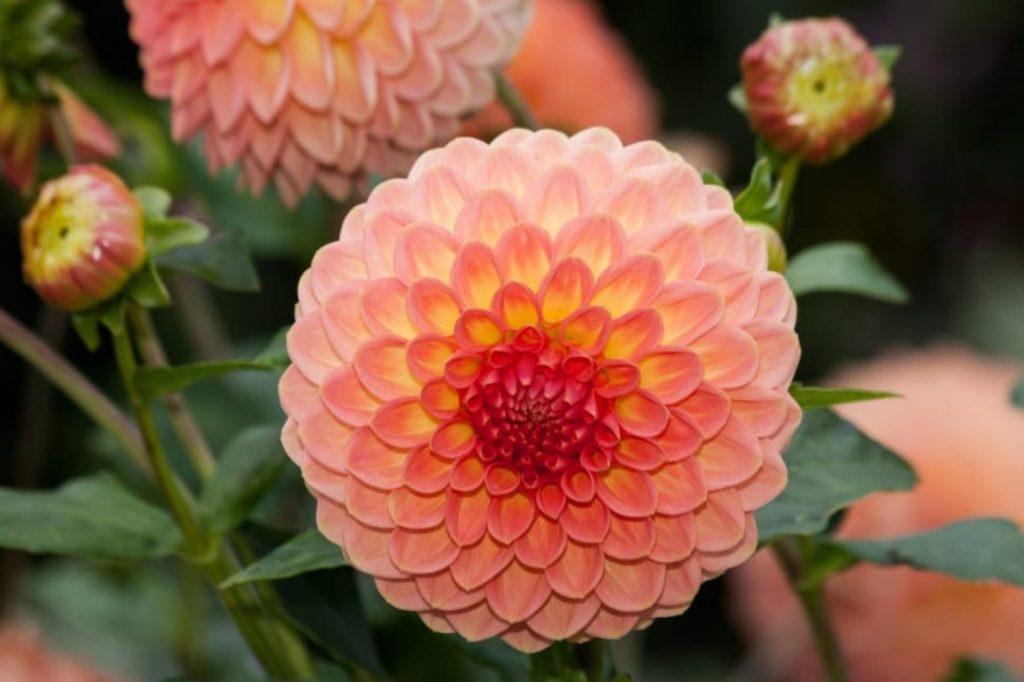
Spring Starflower
| Scientific name | Ipheion uniflorum |
| Growing zones | 5 through 9 |
| Light requirements | Full to partial sunlight |
| Soil preference | Sandy to loamy, well-draining |
| Mature size | 4” to 8” tall by 6” wide |
A relative of the amaryllis, spring starflowers are perennial plants that produce lovely flowers in shades of white, blue, and purple.
All of the spring starflower’s eponymous blooms carry a distinctive stripe down the center of each petal.
Spring starflowers are unpretentious, like forget-me-nots and wild violets.
This plant is an excellent choice for farmhouse and cottage-inspired landscapes. Plants propagate themselves and can be divided easily to start new plants.
If you’re looking for ways to support your local ecosystem, adding spring starflowers to your garden is an easy way to do so.
These flowers are always popular with bees and butterflies.
Plant them near trumpet vine, which also blooms in the summer, to keep pollinating insects in your backyard longer.
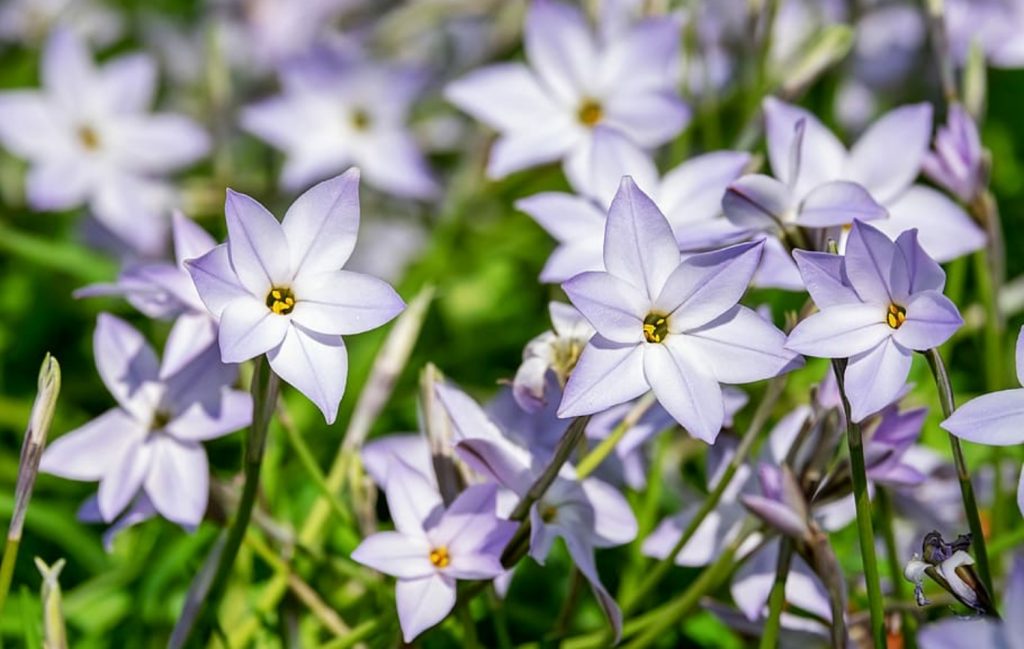
Golden Star
| Scientific name | Chrysogonum virginianum |
| Growing zones | 5 through 9 |
| Light requirements | Full to partial sunlight |
| Soil preference | Well-draining soil that is slightly acidic and can be kept moist |
| Mature size | 6” to 12” tall by 12” to 18” wide |
As members of the Asteraceae family, golden star flowers are closely related to daisies and sunflowers and have a similar open-face and star shape.
Because these flowers are often found growing wild in woodlands, especially along riverbanks, they grow best in well-draining soil that can be kept moist.
Although golden star flowers are somewhat tolerant of shade, if they get too much, then they won’t produce many flowers.
So to ensure your golden star flowers produce loads of blooms, be sure to plant them in full sun.
Starfish Cactus
| Scientific name | Orbea variegata |
| Growing zones | 9 through 12 |
| Light requirements | Full to partial sunlight |
| Soil preference | Well-draining soil, sandy to rocky |
| Mature size | 3” to 6” tall by 12” to 18” wide |
Often grown as a houseplant, starfish cactus are fascinating to look at when they’re not blooming. But when they do bloom, they’re a real treat to see.
This succulent’s star-shaped flowers look like something you might find while scuba diving.
Each bloom is shaped just like a starfish and typically comes in a base color of creamy yellow, speckled with red, brown, or orange spots.
Whether you decide to make your starfish cactus a permanent fixture in your small succulent garden, or you plan on keeping it indoors to make your home more exciting, you can’t go wrong with this dazzlingly gorgeous flower.
The benefits of planting star-shaped flowers in your garden
Star-shaped flowers have a unique appearance that is as attractive to pollinators as it is to us!
Plus, growing a wide variety of flowers encourages pollinators to stick around, which, in turn, makes your garden a more enjoyable place to be.
So, what are you waiting for? Start growing star-shaped flowers in your garden today, and watch your flower beds come to life!
